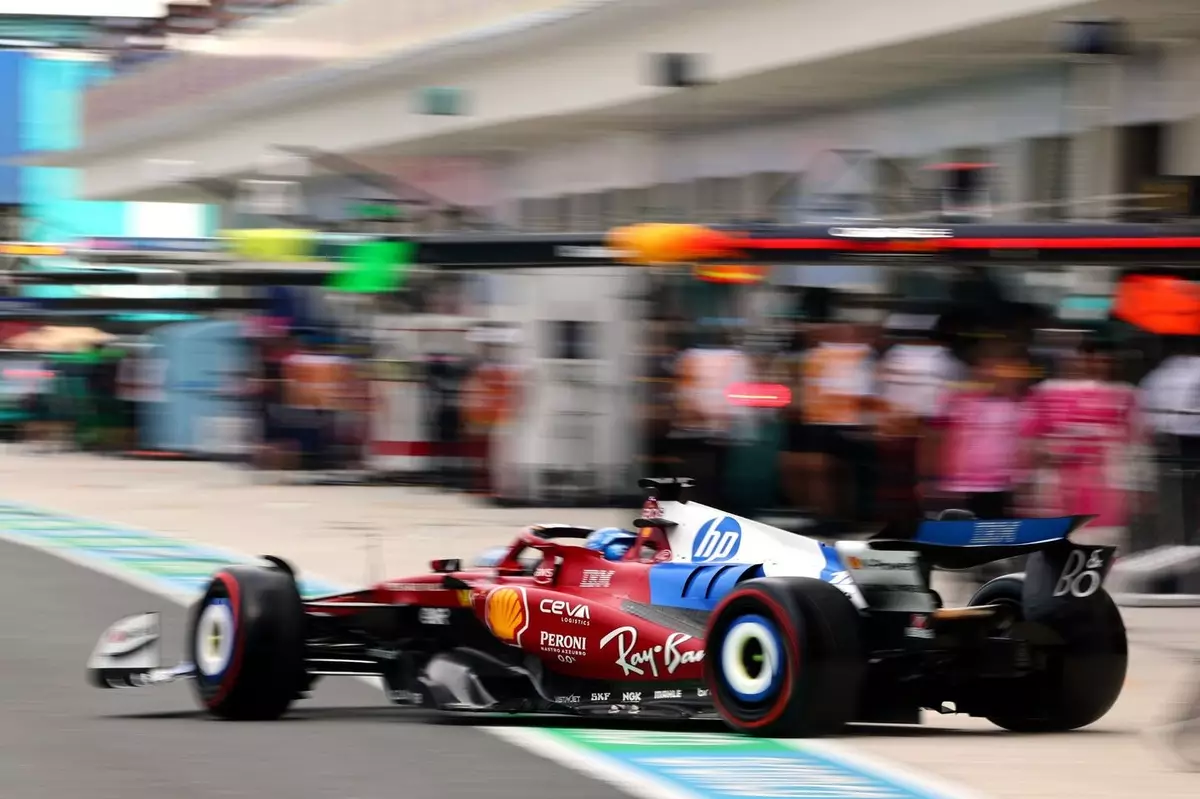The world of Formula 1 is perennially captivated by speed, competition, and the relentless pursuit of perfection. Recently, Charles Leclerc of Ferrari expressed a sentiment familiar to fans and insiders alike: frustration at his team’s current standing. Despite their concerted efforts to maximize the performance of their 2025 car, Leclerc’s eighth-place qualifying at the Miami Grand Prix served as a bitter pill to swallow. In many ways, this episode reveals the growing chasm between Ferrari and its leading rivals—Red Bull, McLaren, and Mercedes—making long-time fans question whether the storied Scuderia has fallen too far behind in the race for supremacy.
The disappointment is even more palpable when we consider the caliber of both Leclerc and his teammate, Lewis Hamilton. After Hamilton’s unfortunate exit before Q2, it became glaringly obvious that both drivers were struggling against a tide of superior competition. As the qualifying session unfolded, it was evident that Ferrari’s ambition to wrestle back its historical dominance in the sport was hindered by tangible limitations in their car’s performance. With Leclerc finishing 0.550 seconds behind Max Verstappen’s pole time, it seems almost incredulous that Ferrari’s engineering could have reached an impasse at this juncture of the season.
Understanding the Performance Gap
Leclerc expressed his frustrations candidly, pointing out that for all the tweaks and adjustments Ferrari has implemented, the raw performance simply doesn’t equate to success on the grid. “It is frustrating,” he lamented, emphasizing a deeper issue that resonates beyond mere numbers. Ferrari has historically relied on its ability to innovate and adapt, yet the current trajectory indicates a struggle not just with getting the most out of their vehicle, but with understanding the aspects that are leading to deficiencies in performance.
The issues faced by the team aren’t merely technical; they’re symptomatic of a larger malaise. When Leclerc pointed out that the car lacks downforce—a crucial factor, especially on circuits dominated by slow corners—he hit on an existential question facing the team today: how do they bridge this performance gap? It’s a question that raises eyebrows, especially considering Ferrari’s rich history of technical prowess in F1. Perhaps it’s time to critically reassess not just what they’re doing, but how they think about racing on the whole.
Analyzing Recent Performances
Interestingly, Leclerc’s experience at the Saudi Arabian Grand Prix revealed that Ferrari can still compete, albeit inconsistently. His podium finish in a high-speed environment showcased the potential locked within the car, but the stark difference when racing in Miami highlights an alarming trend: Ferrari can shine in certain conditions, yet falter in others. The Miami International Autodrome, with its winding slow corners, serves as a graveyard for Ferrari’s current issues. When the car is exposed to its limitations, as it was in Miami, the specter of their faded glory comes into sharper focus.
Moreover, Leclerc’s crash while navigating to the grid further illustrates the precariousness of Ferrari’s situation. It was a misstep that, while unfortunate, should raise alarms within Ferrari regarding decision-making under pressure. In racing, every second counts, and a single misjudgment can spiral into a series of difficulties—compounding the woes already experienced in their performance.
The Road Ahead
As the team grapples with its limitations, Leclerc’s insights signal a crucial juncture. The objective is clear: they must evolve to not only remain competitive but reclaim their rightful place among the elite in Formula 1. Discussions about technical adjustments and strategic shifts have never been more relevant. Ferrari stands at a crossroads, where the path to redemption requires more than just fine-tuning—the drivers and engineers alike must cultivate a sense of unity in their vision and execution.
To revitalize their approach, Ferrari could benefit from conducting thorough analyses of their rivals’ successes and failures. Understanding what sets teams like Red Bull and McLaren apart must be a priority, encompassing not just the technical specifications, but also the ethos and culture of competitive racing that these teams embody. Amid the heightened pressure of expectations, both internal and external, Ferrari must channel its frustrations into a potent strategy that combines engineering innovation with driver skill.
Ultimately, the legacy of Ferrari is one built on resilience and exalted triumphs. The path to recovery may be fraught with challenges, but the spirit of this iconic brand remains indomitable. It would be a disservice to count them out; after all, with great struggle often comes great performance rejuvenation. Racing is as much about evolution as it is about speed, and the Scuderia will have to leverage every ounce of expertise and passion to navigate their journey back to the front of the pack.


Leave a Reply